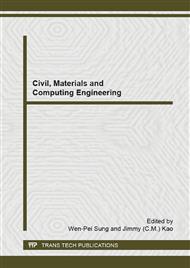p.802
p.807
p.812
p.816
p.820
p.824
p.828
p.833
p.837
A Novel Method to Extract Lip-Reading Features by Using LGEI and DWT
Abstract:
This paper proposes a novel algorithm used in extraction of lip feature extraction for to improved efficiency and robustness of lip-reading system. First, Lip Gray Energy Image (LGEI) is used to smooth noise, and improve noise resistance of the system. Second, Discrete Wavelet Analysis (DWT) is used to extract salient visual speech information from lip by decorrelating spectral information. Last, lip features are obtained by downsampling data from second step, the resample can effectively reduce the amount of computation. Experimental results show the performance of this method is exceedingly discriminative, accurate and computation efficient, the precision rate can rate 96%.
Info:
Periodical:
Pages:
820-823
Citation:
Online since:
December 2014
Authors:
Keywords:
Price:
Сopyright:
© 2015 Trans Tech Publications Ltd. All Rights Reserved
Share:
Citation:


